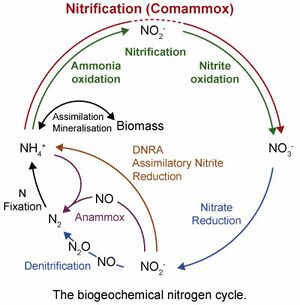Prairie Soils

Introduction
Prairie soils make up approximately 6.9% of the worlds ice-free global land, and 21% of land in the United States (Buol et al. 378). These soils are classified by the USDA as Mollisols. Mollisols are dark fertile soils that are formed from the accumulation organic matter produced by dense root systems of prairie grasses (Brady and Weil 77). The majority of Mollisols are found in temperate climates with variable seasonal environments (Borchert). Fire is also an important in maintaining the grasslands that fuel the organic breakdown of the carbon rich areas (Bird 1961). These rich Prairie soils play the largest role for human use in conventional agriculture. This demand for agricultural production has left few Mollisols uncultivated around the world (Brady and Weil 78). Historically the combination of grasses and microbes in this environment has helped create a habitat that humans have preferred for cultivation for thousands of years. Microorganisms in prairie grass environments are responsible for the high amount of organic matter, and consequently the high productivity that is obtained in cultivation. Mollisols have high levels of carbon, nitrogen, and phosphorus.
Physical environment
Vegetation
Prairie soils are covered by a variety of grasses ranging from short grass steppe species to tall grass species. Short grasses typically resemble monoculture meadows not normally exceeding 30cm in height. Tall grass prairies are less uniform and caintain grasses growing to heights of 1-3 meters. Vegetation cover is highly dependent on moisture regime in the area. Taller grasses require more moisture (Buol et al. 301).
Soil Composition
Mollisols are rich due to the accelatraed decompostion of organic matter. These soils have a thick, dark, soft mollic epipedon.
Microbial Processes
Decomposition
Soil microbes are very productive under prairie soils. The extensive grass coverage, along with dense root systems and fungal mats allow an ample supply of organic matter to break down into various nutrients.
Carbon Cycle
Carbon is recycled back into the soil through decomposition. Microbes breakdown and utilized soluble components and proteins from organic material. Microbes break down different materials at different rates. For example Cellulose is more easily decomposed compared to lignin(LINK: http://en.wikipedia.org/wiki/Lignin). The two major end product in the carbon cycle after decomposition is carbon dioxide and microbial biomass (Sylvia et al.)This helps account for the high amounts of carbon and Soil Organic Matter in prairie soils.

Nitrogen Cycle
The Nitrogen cycle is also another key reason why prairie soils are very rich and productive. Microbes are responsible for both nitrogen mineralization and immobilization. Both processes regulate the amount of available nitrogen that is in the soil. Some bacteria are also able to fix nitrogen through Nitrogen Fixation, and use dinitrogen from the atmosphere as a nitrogen source.
Microbial Communities
Zymogenous Organisms
Zymogenous organisms are very important in breaking down souble organic matter in soils (Sylvia et al.).
Nitrogen fixing bacteria
These bacteria are classified as Diazotrohps (Sylvia et al.). Most Diazotrophs are Chemoautotrophs and need to fix nitrogen as an energy source.
Plant endophyte
Endopytes work directly with grasses to make prairie soils. These organisms will also create the dense root systems seen in prairie soils.
Current Research
"Synthetic nitrogen fertilizers deplete soil nitrogen: a global dilemma for sustainable cereal production"
Dr. Mulvaney et al. suggest that agricultural soils are being depleted of their soil organic matter because of increased, and sustained, application of fertilizers. Furthermore, The article argues continuous and increased nitrogen application is increasing microbial decomposition of organic matter at an alarming rate, and will be reflected on the global level.
"Distribution of Amino Sugars in Mollisols in the Northeast of China"
Research in Northeast China looked into pools of amino acids in different temperate regions, and what types of microbes are present and responsible for different pool sizes. The research concluded that in prime agricultural lands amino acids were derived from bacterial sources.
"Biomass and catabolic diversity of microbial communities with long-term restoration, bare fallow and cropping history in Chinese Mollisols"
Wang et al. studied microbe function under different treatments on Mollisols in China. The study found that microbes were in largest abundance under soils that were restored to a natural prairie state compared to regularly cultivated soils.
=
References
[http://www.lawrieco.com.au/uploaded_files/document_uploads/PublisherUploads/Documents/Library/Nitrogen_Phosphorus/2009_Synthetic_Nitrogen_Fertilisers_Deplete_SoilN_Mulvaneyetal.pdf R. L. Mulvaney, S. A. Khan, and T. R. Ellsworth. 2009. "Synthetic Nitrogen Fertilizers Deplete Soil Nitrogen: A Global Dilemma for Sustainable Cereal Production" Journal of Environmental Quality. 38 Nov.–Dec.]
D. Sylvia, J.fuhrmann, P. Hartel, D. Zuberer. 2004. Principles and Applications of Soil Microbiology, 2nd edition. Upper Saddle River, N.J. Pearson Prentice Hall
Edited by Morgan Davis, a student of Angela Kent at the University of Illinois at Urbana-Champaign.
